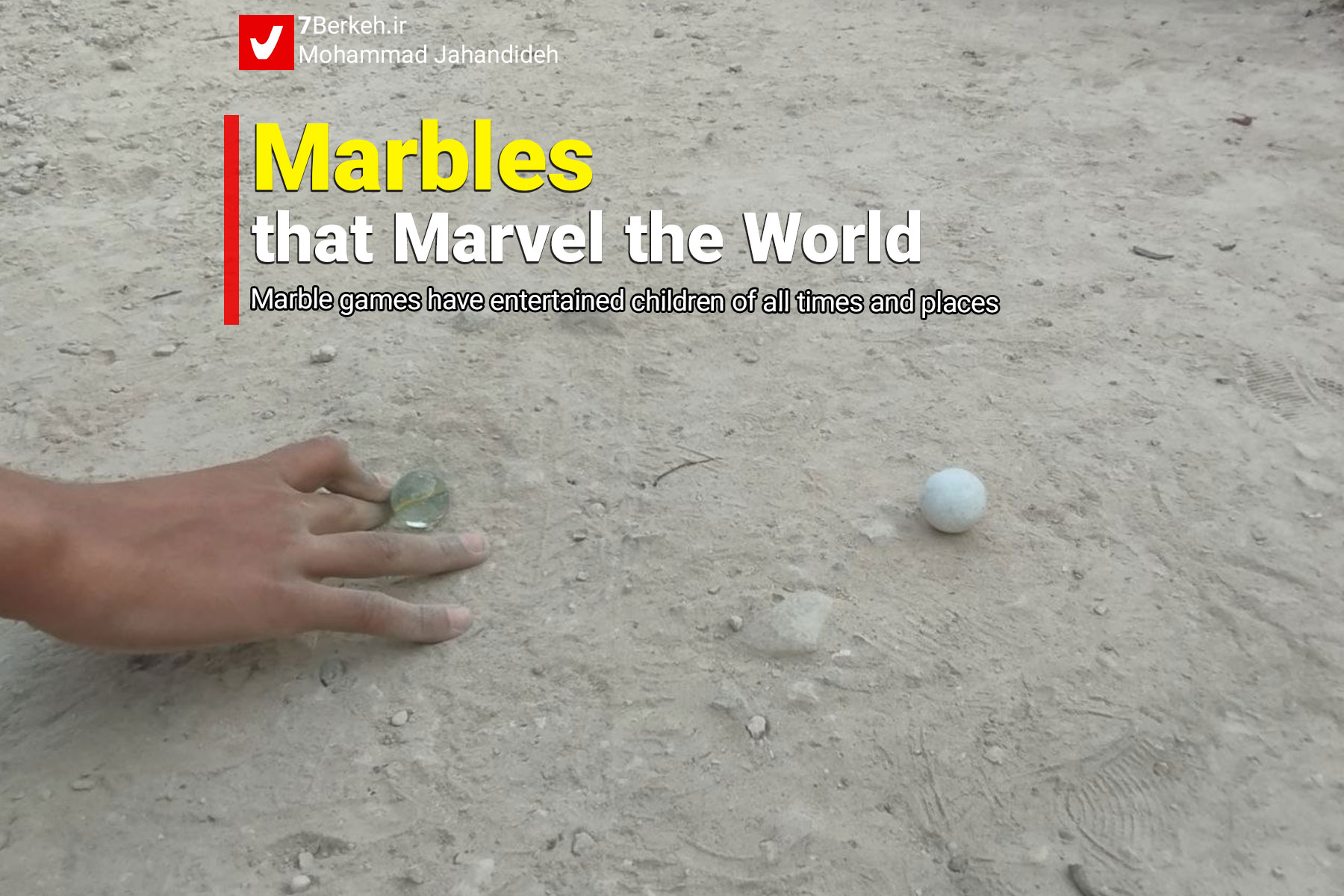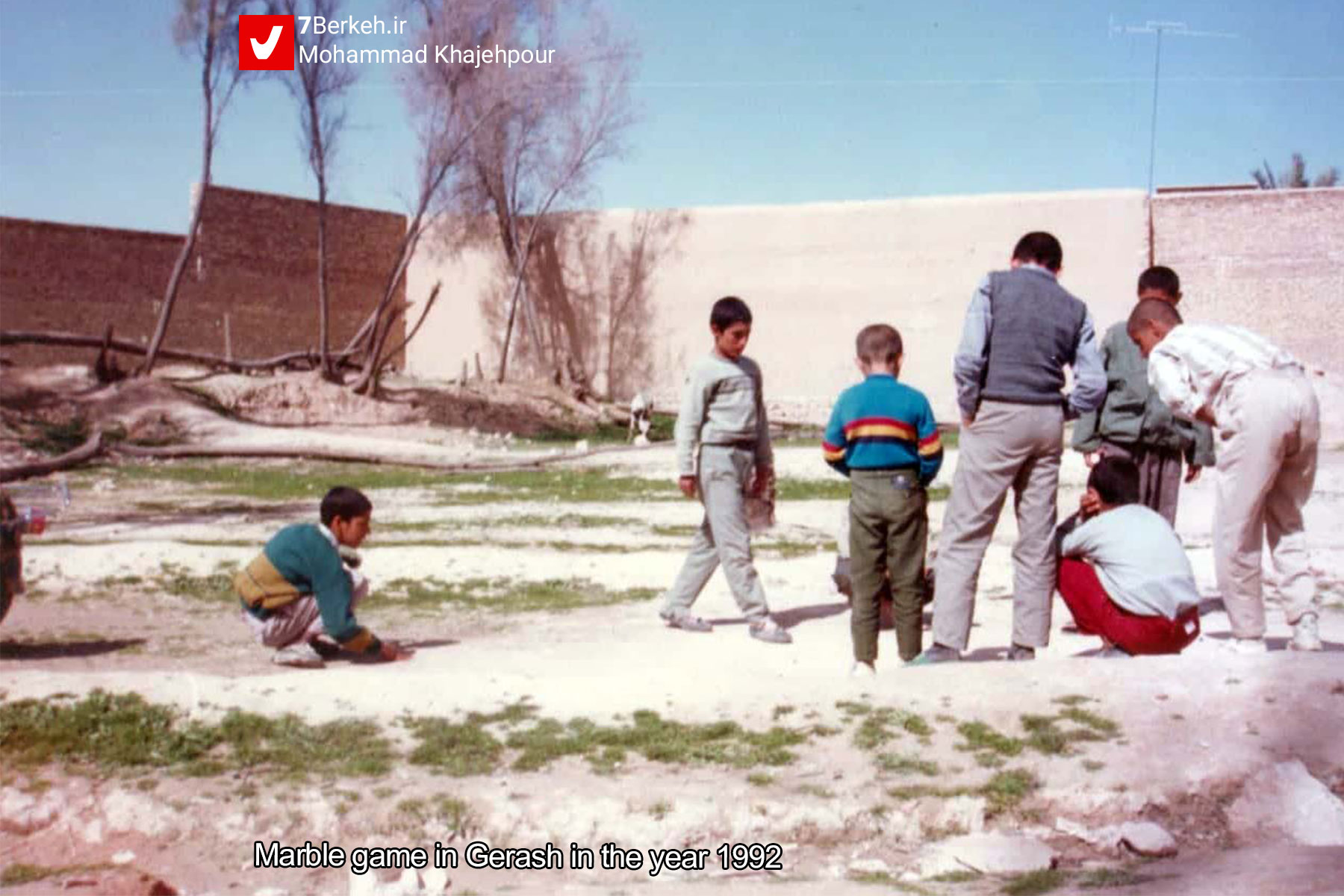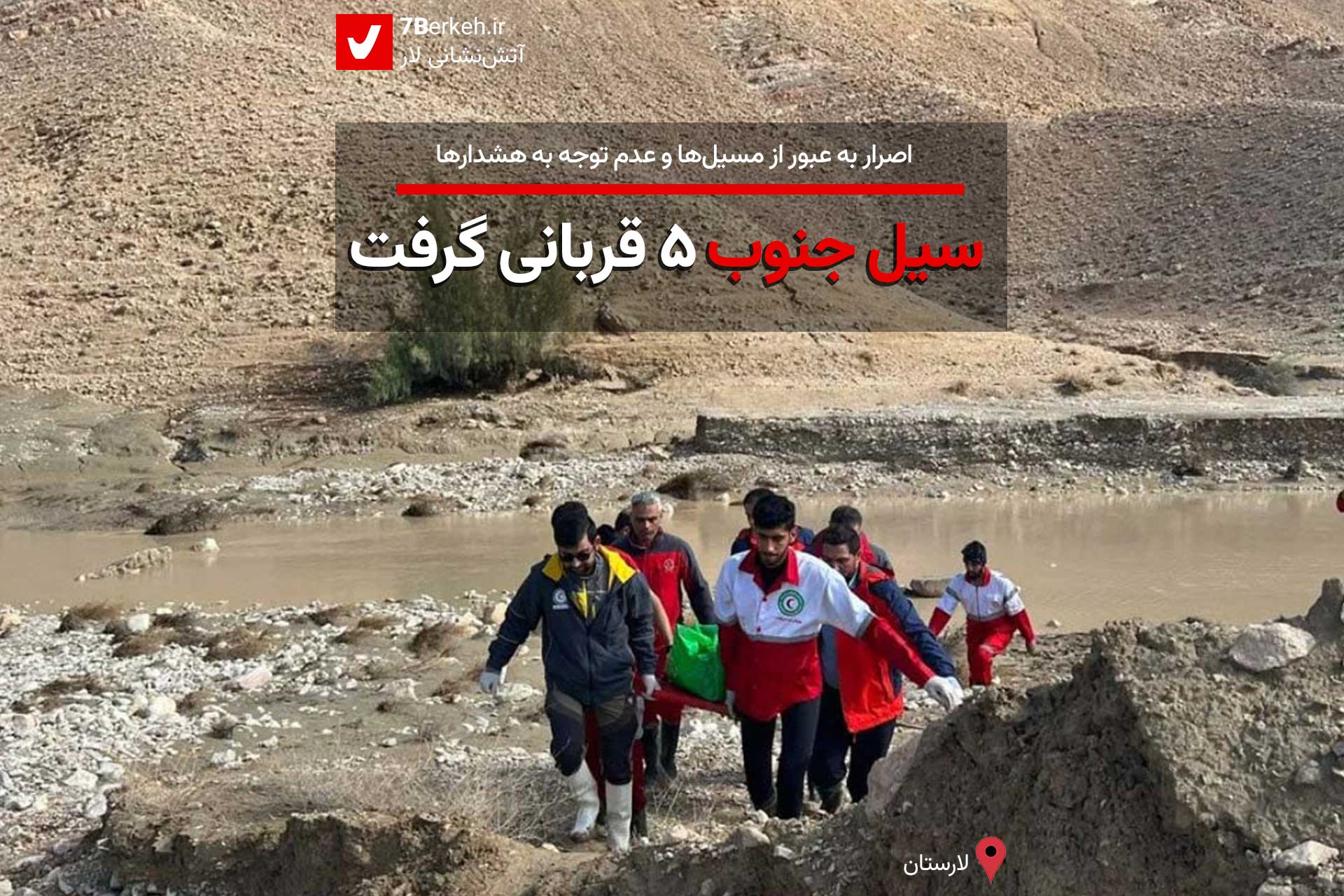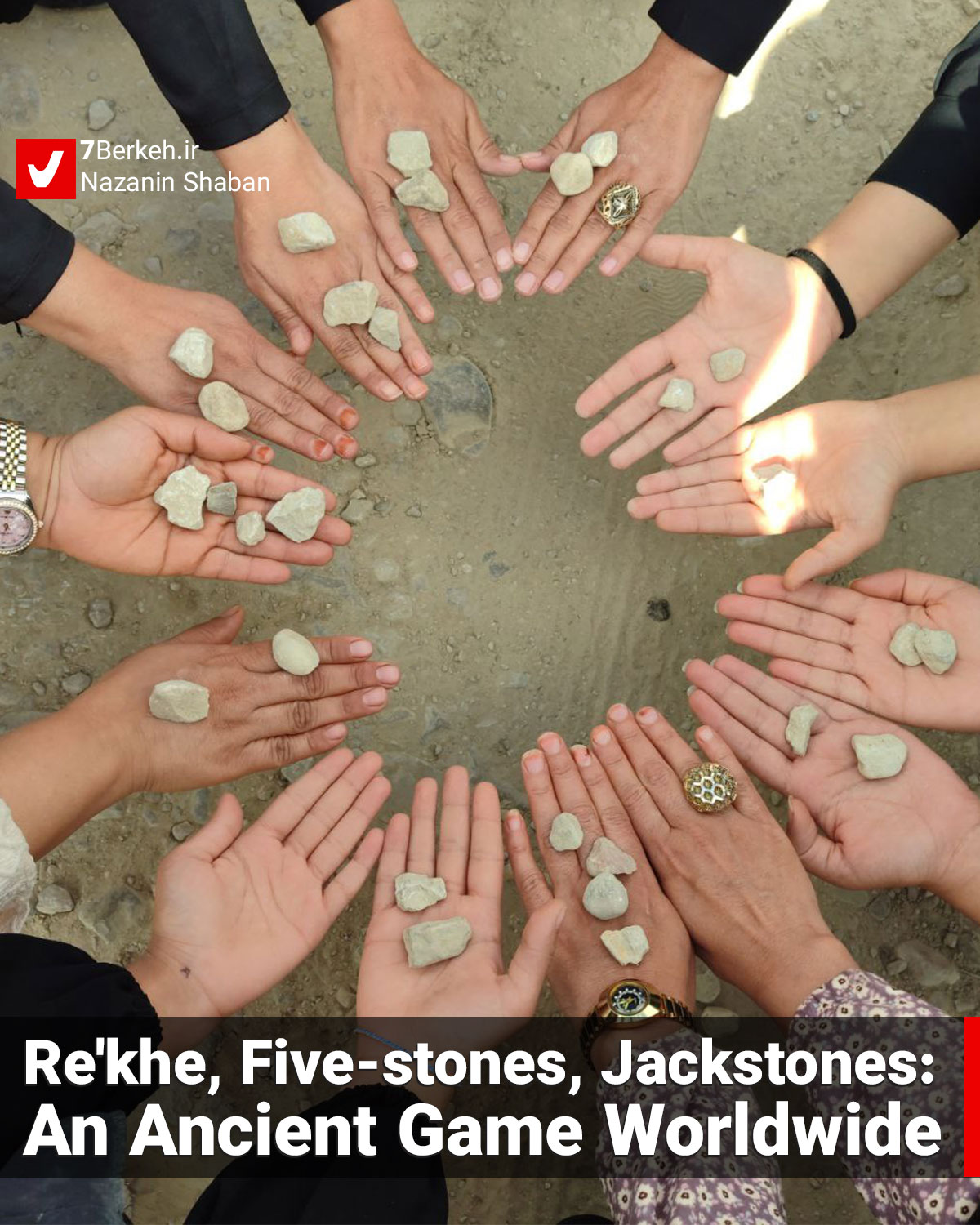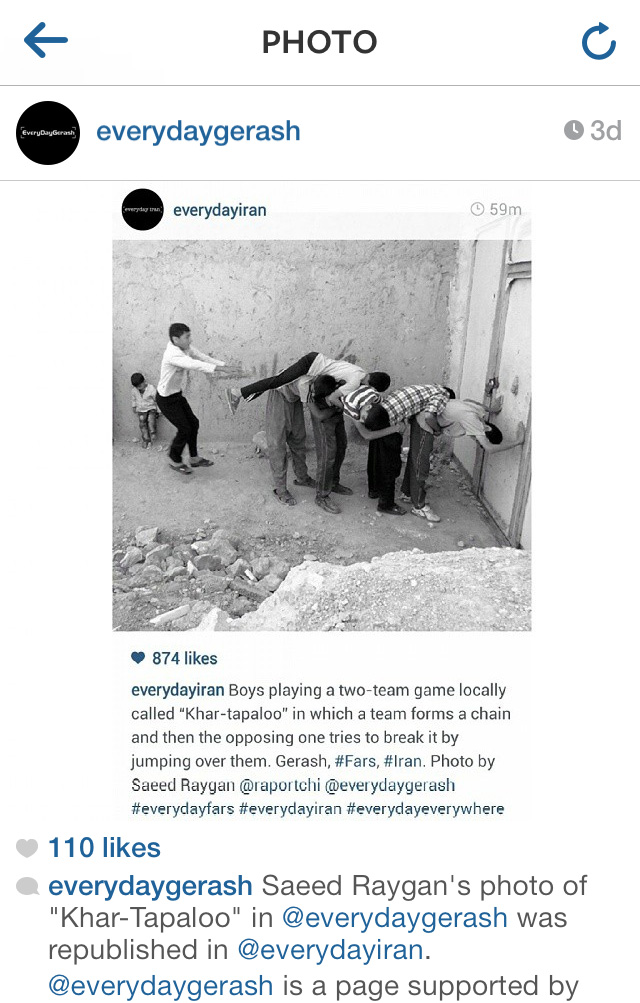7Berkeh: In this day and age, you think all the children are immersed in their devices and playing video games; however, every now and then, you get surprised at seeing a bunch of young children playing games in alleyways. Game of marble one such game that still gathers children around in Gerash and perhaps all around the world.
A Short History of Marble Games
Round colorful marbles are the cheap and simple tools of a game called marble game. Many people around the world still play the game with different styles and rules. These marbles signify cultural anthropological connections in amusement field which “dates back to 2500 BCE, when small stones identified as marbles were first discovered by archeologists near Mohenjo-daro in a site associated with the Indus valley civilization” (Wikipedia).
The marbles are documented in many different countries. In Kids Around the World Play, The Best Fun and Games from Many Lands, Arlette. N. Braman writes, “the oldest known Roman marbles date back to 3000 B.C. Children in ancient Rome played the game with nuts and marbles. In North America, engraved marbles have been found in ancient Native American earth mounds” (43).
The game is even mentioned by Ovid, the Roman poet in his poem ‘Nux’ (Wikipedia). The game is documented throughout history from ancient Egypt, where the marbles were made of clay, glass or stone, to Britain which welcomed the game in the Low Countries in the medieval ages.
Marbles around the World
In their reference book, Unique Games and Sports Around the World: A Reference Guide, Doris Corbett and John Cheffers argue that “Very few of the games played around the world can be attributed exclusively to one person or one tribe. Similar games are played in countries far away from one another under different names” (xii). Marble games are no exception.
The game became so popular in the U.S. in the early 20th century that Martin Fredrick Christensen established the first company to manufacture marbles. Today, Marble King is the only company that still manufactures these glassy marbles. Since 1932 the British and World Marble Championship holds at Tinsley Green, West Sussex (Wikipedia).
Marble is called Kanche in India and pili goli in South Asia and they are made of wood, glass, stone of clay in different sizes. Many adults collect the shiny colorful glassy marbles for nostalgia or art collections.
As Braman writes, “Marbles can be played indoors or out and it is played in almost all cultures. In Saudia Arabia, players shoot their marbles into three different shallow holes (spaced evenly apart) in the ground. The first player to do this ten times wins. Korean children combine marbles and tag. Each player digs a shallow hole in the ground and marks it as his or hers. From a throwing line, the player must roll the marble into his or her hole. If the player gets the marble in someone else’s hole, that player must run to get the marble, then run to tag the other player. If the player tags the other player, he or she gets to keep that player’s marble.” (44)
“Mayeh-Bazi” in Gerash
Played as a local game, the game is called “Tileh-Bazi” in different regions of Iran and “Mayeh-Bazi” in Gerash. To play it you need some marbles, a soil field and undoubtedly a partner as it is defined as a team-play.
Various games can be played with marbles, and it is played differently in every country and region. However, there are some similarities too. In Gerash, the game is simple. First, you dig a small hole in the earth. Then you arrange the marbles in 10 cm vertical distances from each other. You sit one to three meters farther than the hole and strike the first marble by putting your point finger on the middle one. The first marble knocks its opposite marble and if you kick it successfully, that marble is yours.
Mohammad Hassan Roostaiyan in Local Games of Gerash (2005) writes: “This game increases the shooting and concentrating power of children and teenagers…and the general purpose of the game is amusement and hobby” (201-202).
Amusement and Skill Development
In our modern age that is saturated with online games and screens, returning to old games like marble games is a way to bring children together again and improve social relationships and friendship among them.
Corbett and Cheffers believe, “many of the games children and teenagers play in different cultures help them to develop the skills they will need to assimilate into the adult worlds of their cultures, whether these are decision-making skills, diplomatic skills, hunting skills, skills that teach coordination, or any number of other skills children might need once they reach adulthood. Many of the games adults play represent the challenges they may face in their day-to-day living, whether they be warfare, decision making, or the need to act quickly, among others” (xi).
References:
Braman, Arlette N. Kids Around the World Play: The Best Fun and Games from Many Lands. New York: John Wiley & Sons, 2002.
Corbett, Doris; John Cheffers, et. al. (Eds.). Unique Games and Sports Around the World: A Reference Guide. London: Greenwood Press, 2001.
Roostaiyan, Mohammad Hassan. Local Games of Gerash. Tehran: Hamsayeh Press, 2005. [In Persian]
wikipedia.org/wiki/Marble_(toy)
